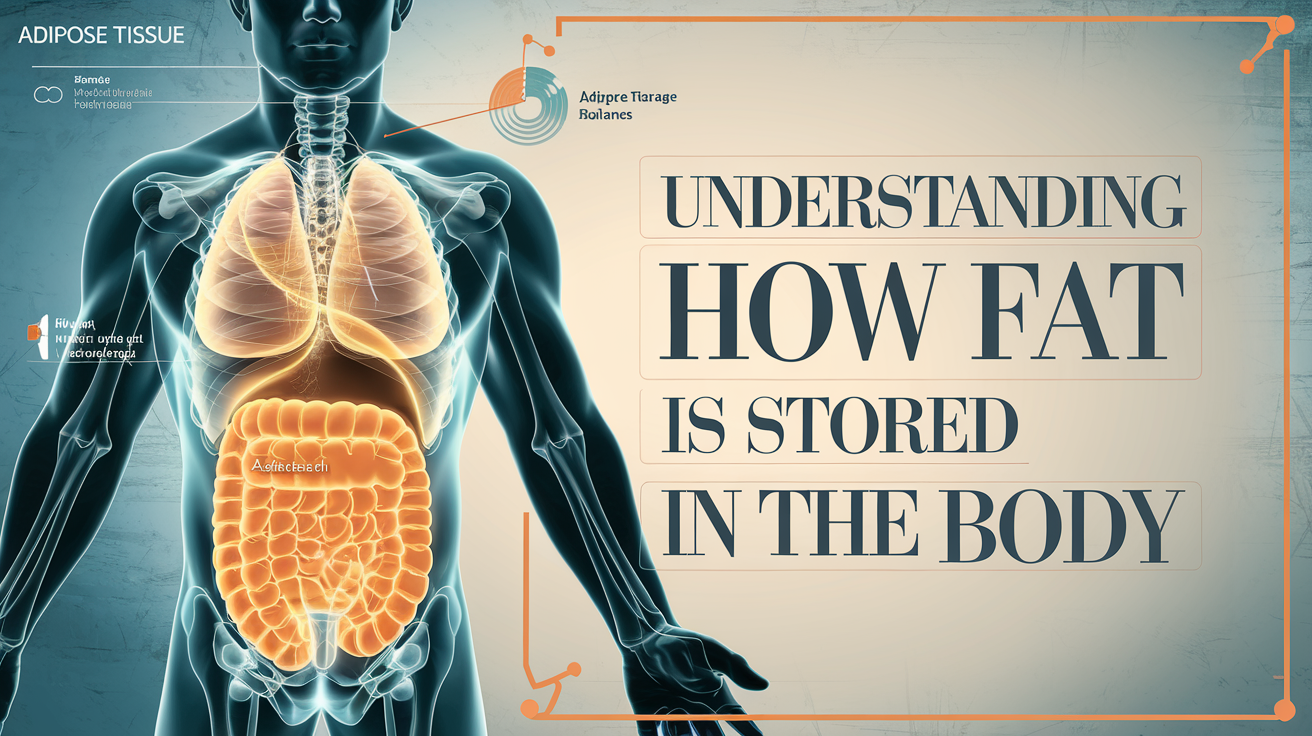
Common Mistakes with Intermittent Fasting
Intermittent fasting has become a go-to strategy for weight loss and improving overall health. It’s simple, flexible, and backed by science. But here’s the catch: while it works wonders when done right, small slip-ups can derail your progress.
Think of it like signing up for a gym membership but only using the sauna. You’re putting in effort, but not where it counts. From sneaky midnight snacks to hidden sugars in your drinks, these errors can add up quickly.
In this article, we’ll uncover the 14 key pitfalls and how to fix them. Spoiler alert: Your favorite kombucha might be part of the problem. Ready to fine-tune your fasting routine? Let’s get started.
Introduction to Intermittent Fasting and Its Benefits
Think of intermittent fasting as a game of strategic eating—timing is everything. Instead of obsessing over calories, you focus on when you eat. It’s like switching from Snickers-mode to fat-burning mode. When you fast, your body taps into stored energy, boosting your metabolism and improving blood sugar levels.
Studies show the health benefits are real. An NIH review found that fasting can improve insulin sensitivity by 3-6% in just 8 weeks. The 16/8 method, where you fast for 16 hours and eat within an 8-hour window, can even increase human growth hormone production by 5-fold. That’s a game-changer for fat loss and muscle repair.
But the perks don’t stop there. People report up to 8% weight loss in 12 weeks, sharper mental clarity, and fewer “hangry” episodes after the adaptation phase. Plus, fasting triggers cellular repair processes, reducing inflammation markers linked to chronic diseases.
Intermittent fasting isn’t just a diet—it’s a lifestyle shift that can transform your energy levels and overall well-being. Ready to play the eating chess game? Let’s dive into the details.
Not Choosing the Right Intermittent Fasting Plan
Picking the wrong fasting plan is like wearing shoes two sizes too small—it’s uncomfortable and won’t get you far. A BetterMe survey found that 58% of people who quit intermittent fasting blame “wrong plan selection” as the main reason. The truth is, not all fasting schedules are created equal. Some will fit your life like a glove, while others might leave you frustrated and hungry.

Understanding Different Fasting Methods
There’s no one-size-fits-all approach to fasting. Here’s a quick breakdown of popular methods:
- 16/8 Method: Fast for 16 hours, eat within an 8-hour window. A 2023 study found this plan keeps people compliant 37% longer than the 5:2 diet.
- 5:2 Diet: Eat normally for 5 days, restrict calories to 500-600 for 2 days. Great for those who prefer flexibility.
- Warrior Diet: Eat one large meal at night after a 20-hour fast. Think of it as the intense gym bro of fasting plans.
- 14:10 Method: A gentler option for beginners or busy parents. A mom of three thrived on this after struggling with the 20:4 plan.
How to Select a Plan That Fits Your Lifestyle
Choosing the right method is about understanding your daily routine. Night shift workers might prefer the 16/8 plan, while nurses often find success with the 14:10 schedule. Here’s a quick checklist to help you decide:
- If you snack after dinner, 16/8 is better than OMAD (One Meal a Day).
- Start with a plan easier than your morning crossword puzzle—gradually increase fasting hours.
- Consider your energy needs. A 2022 review found the 16/8 method, combined with calorie restriction, works well for weight management.
Remember, the best plan is the one you can stick to. For more insights, check out this guide on intermittent fasting benefits.
Skipping Meals During Your Eating Window
Skipping meals during your eating window is like trying to run a marathon on an empty tank—it just doesn’t work. Your body needs fuel to function properly, and undereating can lead to a cascade of problems. Think of it as the “IF Hunger Games”: skip meals, and you’ll likely raid the pantry later.
The Importance of Nutrient-Dense Meals
Nutrient-dense meals are your best bet during your eating window. Your plate should look like a Pokémon evolution—start basic and build to balanced. Include lean proteins, healthy fats, and complex carbs to keep your energy levels steady.
Here are five binge-proof meals to try:
- Salmon bowls with avocado ranch
- Quinoa salads with roasted veggies
- Chicken stir-fry with brown rice
- Turkey lettuce wraps with hummus
- Sweet potato toast with almond butter
Remember the “Grandma Test”: If she’d recognize all the ingredients, you’re on the right track.
How Skipping Meals Can Backfire
Skipping meals can turn your metabolism into a rusty lawnmower. A University of Minnesota study found that skipping meals increases cortisol by 28%, which can lead to weight gain. Plus, a 500-calorie deficit during your eating window can trigger muscle loss in just three weeks.
Your energy levels will plummet, and you’ll feel sluggish. Instead of skipping meals, focus on balanced, satisfying options that keep you full and energized.
Neglecting Hydration During Fasting Periods
Your cells are like houseplants—neglect them, and things get crispy. Staying hydrated is non-negotiable during fasting periods. Even a 2% drop in hydration can cause a 10% performance drop, according to the Journal of Strength and Conditioning. Don’t let dehydration sabotage your progress.

The Role of Water in Fasting
Water is the backbone of fasting success. It keeps your energy levels steady, flushes out toxins, and helps regulate body temperature. When you’re fasting, your body relies on stored energy, and water ensures this process runs smoothly.
Pro tip: Add a pinch of electrolytes to your water to avoid the dreaded “fasting flu.” This simple hack keeps your body balanced and energized throughout the day.
Best Beverages to Stay Hydrated
Not all drinks are created equal. Here’s a tier list to help you choose wisely:
| Tier | Beverage | Why It’s Great |
|---|---|---|
| S-tier | Water | Essential for hydration and fasting success. |
| A-tier | Green Tea | Boosts metabolism and keeps you alert. |
| B-tier | Sparkling Water | Increases satiety by 22% compared to still water. |
| F-tier | “Diet” Lemonade | Often packed with artificial sweeteners that can spike insulin. |
Debunking myths: No, LaCroix doesn’t break your fast—but watch out for sneaky additives in other sparkling drinks. For more tips, check out this guide on staying hydrated.
Your hydration game doesn’t have to be complicated. Keep it simple, stay consistent, and your body will thank you.
Overeating When You Break Your Fast
Breaking your fast can feel like a Black Friday shopping spree—everything looks good, and you grab more than you need. This happens because your hunger hormones, especially ghrelin, spike after fasting. A study in the Journal of Endocrinology found that ghrelin levels increase by 45% after a 16-hour fast, making it harder to control your appetite.

The Science Behind Ghrelin and Hunger
Ghrelin, often called the “hunger hormone,” signals your brain to eat. When you fast, your body produces more ghrelin to encourage food intake. This can lead to overeating if you’re not careful. Think of it as your body’s way of saying, “I’ve been patient—now feed me!”
Research from Nutrition & Metabolism shows that starting your meals with protein can reduce post-fast calorie intake by 34%. This is because protein helps stabilize ghrelin levels, keeping you fuller for longer.
Tips to Avoid Overeating
Here’s how to outsmart your hunger hormones and avoid overeating:
- Start with protein: A chicken salad or cottage cheese bowl keeps ghrelin in check better than sugary treats like donuts.
- Use toddler plates: Your eyes are greedier than your stomach. Smaller plates help control portion sizes.
- Follow the 20-minute rule: Wait 20 minutes before going for seconds. This gives your brain time to register fullness.
Here’s a quick comparison of smart break fast foods vs. pitfalls:
| Smart Choices | Pitfalls |
|---|---|
| Cottage cheese bowls | Cinnamon rolls |
| Grilled chicken salad | Pizza slices |
| Sweet potato toast | Bagels with cream cheese |
For more tips on managing your appetite, check out this guide on appetite suppressants. Remember, breaking your fast is about balance—not bingeing.
Choosing the Wrong Foods During Your Eating Window
Your eating window is like a blank canvas—what you paint on it matters. While fasting helps regulate blood sugar and supports weight loss, the wrong foods can undo all your hard work. A BMJ study found that ultra-processed foods make up 57% of the average American diet. These choices can sabotage your health and fasting goals.

The Impact of Processed Foods
Processed foods are the fast food of the fasting world—quick, convenient, and full of regret. They’re packed with additives, sugars, and unhealthy fats that spike insulin levels. This can leave you feeling sluggish and craving more junk. Think of it as a vicious cycle: eat processed, feel worse, repeat.
Optimal Foods for Fasting Success
Whole foods are your fasting superheroes. A study in the Annals of Internal Medicine found that whole food diets increase fasting-related weight loss by 41%. These nutrient-dense options keep your energy steady and your cravings at bay.
Here’s a quick comparison to help you choose wisely:
| Food Court Choices | Farmer’s Market Picks |
|---|---|
| Granola bars (sneaky sugar bombs) | Fresh berries with almond butter |
| Protein bars (Trojan horses of sugar) | Hard-boiled eggs or roasted chickpeas |
| Frozen pizza | Cauliflower fried rice (yes, it’s delicious!) |
Pro tip: Stock up on these 15 IF-friendly Costco finds:
- Organic spinach
- Grass-fed beef patties
- Avocado oil
- Wild-caught salmon
- Almond flour
Remember, your eating window is your chance to fuel your body, not sabotage it. Choose wisely, and your fasting journey will be smoother than a Costco parking lot on a Tuesday morning.
Not Listening to Your Body’s Signals
Your body is smarter than your calendar—listen to it. Fasting isn’t about ignoring hunger pangs or pushing through fatigue. It’s about tuning in to what your body needs and adjusting your schedule accordingly. Think of it as a conversation, not a monologue.

Recognizing Hunger and Fullness Cues
Ever felt “hangry” but realized you’re just bored? That’s where the HALT method comes in. Ask yourself: Hungry? Angry? Lonely? Tired? If the answer is yes to any, don’t eat. Your brain takes 20 minutes to register fullness, so slow down and savor your meals.
Signs you’re over-fasting include cold hands, constant food thoughts, or scrolling through food TikToks at 2 a.m. These are red flags that your energy levels are dipping. Adjust your fasting window before it derails your progress.
When to Adjust Your Fasting Schedule
Your needs change with seasons, stress, and life events. Sarah, a busy mom, switched to a 12:12 plan during flu season. It gave her the flexibility to care for her kids without feeling drained. A whopping 68% of successful fasters tweak their schedule seasonally—don’t be afraid to do the same.
Here’s a script for when friends pressure you to break fast early: “I’m good for now, but I’ll join you for coffee later!” It’s polite, firm, and keeps you on track.
Try the raisin exercise: Hold one in your hand, examine it, smell it, and slowly chew. It’s weird, but it trains your brain to focus on eating mindfully. Your body will thank you.
Overexercising During Fasting Periods
Ever tried running a marathon without training? That’s what overexercising during fasting feels like. While fasting can help burn fat, pairing it with intense workouts can lead to fatigue, injury, and even muscle loss. It’s like trying to sprint on an empty tank—your body needs fuel to perform.

The Risks of Intense Workouts While Fasting
Fasted HIIT might sound like a shortcut to fitness, but it’s a recipe for trouble. A study in the Journal of Sports Medicine found that fasted high-intensity workouts increase injury risk by 19%. Without proper nutrition, your body struggles to recover, leaving you sore and drained.
Dave learned this the hard way. After a fasted CrossFit session, he ended up with a pulled hamstring and zero energy for the rest of the day. The lesson? Pushing too hard while fasting can do more harm than good.
Best Exercises to Complement Fasting
Not all exercise is off the table during fasting. Low-impact activities like yoga can actually boost fat oxidation by 27%, according to a Yoga Journal study. Here’s a weekly plan to keep you active without overdoing it:
- Tuesday: Yoga for flexibility and relaxation.
- Thursday: Resistance training to preserve muscle mass.
- Saturday: Light cardio like walking or cycling.
Pro tip: BCAAs (branched-chain amino acids) won’t break your fast but can help protect your muscles during workouts. And yes, vacuuming counts as exercise—turn chores into mini workouts!
| Exercise | Benefits | Risks |
|---|---|---|
| Yoga | Boosts fat oxidation, reduces stress. | Low risk of injury. |
| Resistance Training | Preserves muscle, improves strength. | Requires proper form. |
| Fasted HIIT | High calorie burn. | Increases injury risk by 19%. |
Remember, fasting and workouts are a balancing act. Listen to your body, and don’t push beyond your limits. Your fitness journey should feel sustainable, not like a crash diet.
Ignoring the Importance of Sleep
Sleep is the unsung hero of fasting success—ignore it, and your progress might hit a wall. A University of Chicago study found that just 5 hours of sleep increases hunger hormones by 15%. Combine that with fasting, and you’ve got a recipe for midnight snack disasters.

Bad sleep doesn’t just make you crave Pop-Tarts at 3 a.m. It messes with your metabolism, energy levels, and even your weight loss goals. Night owls, beware: a Sleep Health Journal report shows they have a 33% higher dropout rate from fasting plans.
How Sleep Affects Fasting Results
Sleep and fasting are like peanut butter and jelly—they work better together. When you’re well-rested, your body regulates hunger hormones like ghrelin and leptin more effectively. This means fewer cravings and better control during your eating window.
On the flip side, poor sleep can sabotage your fasting efforts. It spikes cortisol, the stress hormone, which can lead to weight gain. Nurses on night shifts who nailed their sleep strategies saw better fasting results, proving that sleep hygiene matters.
Tips for Better Sleep Hygiene
Ready to upgrade your sleep game? Start with these nightcap alternatives:
- Turmeric tea: A soothing, anti-inflammatory option.
- Warm almond milk: Skip the wine—it disrupts sleep cycles.
Your bedroom environment matters too. Keep it cool (around 65°F), invest in bamboo sheets for breathability, and ditch the snooze button. Here’s a quick checklist:
- Use blackout curtains to block light.
- Turn off screens an hour before bed.
- Try a no-snooze alarm hack to wake up refreshed.
Pro tip: Blue light blockers aren’t just hype. They help your brain produce melatonin, the sleep hormone, so you can drift off faster. Pair these habits with a consistent bedtime, and your fasting results will thank you.
Breaking Your Fast Unknowingly
Ever wondered if that innocent sip of tea is secretly sabotaging your fast? It’s easy to accidentally break your fast with foods and drinks that seem harmless. Even a tiny ½ tsp of honey can spike insulin by 22%, according to the American Journal of Clinical Nutrition. Let’s uncover the sneaky culprits and how to avoid them.

Common Culprits That Break a Fast
Some items are like wolves in sheep’s clothing—they look innocent but can ruin your fast. Here’s a list of stealthy fast-breakers:
- Gum: Even sugar-free gum can trigger insulin spikes due to artificial sweeteners.
- Kombucha: While fermented, it often contains trace sugars that can affect blood sugar levels.
- Supplements: Some gummy vitamins are packed with hidden sugars.
Yale research found that artificial sweeteners increase cravings in 71% of people. So, that “diet” lemonade might be doing more harm than good.
How to Maintain a Clean Fast
Staying on track doesn’t have to be complicated. Here’s a “Fasting Safe List” to guide you:
- Water: The ultimate fasting-friendly drink.
- Herbal teas: Unsweetened options like chamomile or peppermint are safe bets.
- LMNT electrolytes: A great way to stay hydrated without breaking your fast.
Debunking myths: Dirty fasting isn’t a free pass to consume low-calorie junk. Stick to clean, whole options for the best results.
Pro tip: When cravings hit, try brushing your teeth. The minty freshness can curb your appetite and keep you on track.
Quiz time: Can you have apple cider vinegar while fasting? Answer: Yes, but dilute it in water to avoid acidity issues.

Not Being Patient with the Process
Patience is your secret weapon when it comes to fasting success. While it’s tempting to expect overnight results, the truth is, fasting is a gradual process. On average, the “ah-ha moment” happens around 6.2 weeks. That’s when people start noticing real changes in their energy, weight, and overall well-being.
Understanding the Timeline for Results
Let’s break it down: Week 1 might feel like a struggle as your body adjusts. By Week 3, you’ll likely notice glowing skin and fewer cravings. By Week 6, the real magic happens—your goals start feeling within reach. Grandma Edna lost 1lb per week sustainably, proving that slow and steady wins the race.
How to Stay Motivated
Staying motivated is key to long-term success. Here are some tips to keep you on track:
- Journaling: Writing down your progress increases adherence by 44%. Track non-scale victories like better sleep or looser jeans.
- Progress Selfies: Visual evidence of your transformation can be a powerful motivator.
- IF Buddy System: Partner with a friend to share tips and stay accountable.
Red flags to watch for include constant fatigue or feeling overly restricted. If this happens, adjust your fasting window or consult a professional. Remember, fasting should feel sustainable, not like a punishment.
Celebrate micro-wins along the way. Did your jeans button easier today? That counts! These small victories keep you motivated and focused on your goals.

Failing to Track Your Progress
Tracking your fasting journey is like having a GPS for your health—it keeps you on the right path. Without it, you might miss the signs that lead to success. A MyFitnessPal study found that users who track their fasts lose 2.5x more weight. That’s a game-changer.
Why Monitoring Matters
Monitoring your progress isn’t just about numbers on a scale. It’s about understanding your body’s rhythm and making adjustments. Stanford research shows that circadian rhythm apps improve fasting compliance by 31%. When you track, you’re more likely to stick to your plan and see real results.
Think of it as a feedback loop. The more data you collect, the better you can fine-tune your fasting strategy. It’s like having a cheat sheet for your health.
Tools and Methods for Tracking
There’s no shortage of tools to help you stay on track. Here’s a breakdown of the best options:
- Apps: Zero and Life Fasting Tracker are fan favorites. They’re free, easy to use, and packed with features.
- Analog Option: A fridge calendar can be a simple yet effective way to track your fasts. It’s like a visual reminder that keeps you accountable.
- Beyond Weight: Track energy levels, mood, and even heart rate variability (HRV) for a holistic view of your progress.
Pro tip: Use Spotify playlists as fasting timers. Create a playlist that matches your fasting window, and let the music guide you.
| Method | Pros | Cons |
|---|---|---|
| Apps | Easy to use, detailed analytics. | Requires a smartphone. |
| Fridge Calendar | Simple, no tech needed. | Less detailed. |
| Journaling | Personalized, reflective. | Time-consuming. |
Caution: Avoid becoming obsessive with tracking. It’s a tool, not a ruler. Use it to guide your journey, not stress over every detail.

Seeking Professional Guidance When Needed
Sometimes, your fasting journey needs a co-pilot—someone who knows the ropes. While fasting can boost your health, certain conditions, like diabetes, require extra care. A staggering 43% of fasting users with diabetes need medication adjustments, according to the ADA. That’s where professional guidance comes in.
Registered dietitian consultations reduce adverse effects by 68%, as noted in the Journal of Nutrition. Whether you’re managing thyroid issues or have a history of disordered eating, experts can tailor a plan to fit your needs. Need to talk to your doctor? Try this script: “I’m exploring fasting—can we discuss how it fits with my goals?”
Finding the right expert is easier than you think. Use tools like the AND dietitian finder or look for IF-certified coaches. Bonus: Many insurance plans cover dietitian visits under preventive care.
Take Mike, for example. With professional supervision, he reversed his pre-diabetes and achieved sustainable results. Your fasting journey is personal, but it’s okay to ask for directions along the way.
📚 References for Common Mistakes with Intermittent Fasting
- Mattson, M. P., et al. (2017). Impact of intermittent fasting on health and disease processes. Ageing Res Rev, 39, 46–58.
- de Cabo, R., & Mattson, M. P. (2019). Effects of intermittent fasting on health, aging, and disease. N Engl J Med, 381(26), 2541–2551.
- Tinsley, G. M., & La Bounty, P. M. (2015). Effects of intermittent fasting on body composition and health markers. Nutr Rev, 73(10), 661–674.
- Patterson, R. E., & Sears, D. D. (2017). Metabolic effects of intermittent fasting. Annu Rev Nutr, 37, 371–393.
- Gabel, K., et al. (2018). Time-restricted feeding improves metabolic risk factors in obese adults. Nutr Healthy Aging, 4(4), 345–353.
- Harvie, M. N., et al. (2011). The effects of intermittent or continuous energy restriction. Am J Clin Nutr, 94(2), 431–439.
- Cienfuegos, S., et al. (2020). Alternate-day fasting improves cardiometabolic health in adults with obesity. Cell Metab, 32(3), 329–341.e5.
- Varady, K. A., et al. (2013). Alternate day fasting for weight loss: a randomized controlled trial. Am J Clin Nutr, 98(2), 514–521.
- Ludy, M. J., et al. (2012). Capsaicin and capsiate effects on energy balance. Chem Senses, 37(2), 103–121.
- Hursel, R., & Westerterp-Plantenga, M. S. (2010). Thermogenic ingredients and body weight regulation. Int J Obes (Lond), 34(4), 659–669.
- Cahill, G. F. (2006). Fuel metabolism in starvation. Annu Rev Nutr, 26, 1–22.
- Journal of Strength and Conditioning Research. (2007). Dehydration impairs performance.
- American Journal of Clinical Nutrition. (2002). Ghrelin and insulin after fasting.
- Stanford Medicine. (2021). Circadian fasting improves weight loss adherence.
- ADA. (2022). Fasting for people with diabetes.
- Journal of Nutrition. (2019). Dietitian guidance improves IF outcomes.
- BMJ. (2019). Ultra-processed food consumption and health risks.




